| Reviews & Columns |
|
Reviews DVD TV on DVD Blu-ray 4K UHD International DVDs In Theaters Reviews by Studio Video Games Features Collector Series DVDs Easter Egg Database Interviews DVD Talk Radio Feature Articles Columns Anime Talk DVD Savant Horror DVDs The M.O.D. Squad Art House HD Talk Silent DVD
|
DVD Talk Forum |
|
|
| Resources |
|
DVD Price Search Customer Service #'s RCE Info Links |
|
Columns
|
|
|
Les Blank: Always for Pleasure
The Collection:
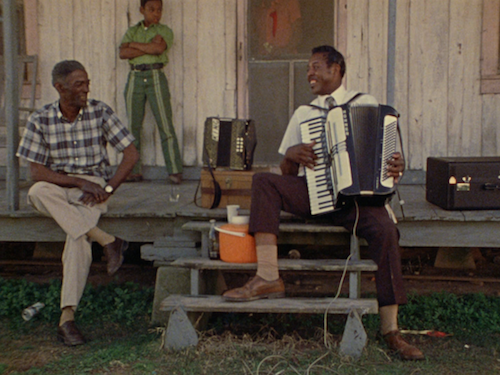
When I saw that Criterion was putting out a Les Blank box set, I was both incredibly excited and a little bummed. For years, Les Blank had always been this obscure documentary filmmaker whose poetic, rambling films were the kind of curios that I could drop into film discussions and seem like the smartest, most cultured guy in the room. I had spent plenty of time in my junior high and high school days, blindly checking out VHS tapes from my local library in search of something different, and that had led to my glorious discovery of Blank's anthropological and utterly personal documentaries, with their idiosyncratic titles like In Heaven There Is No Beer? and Garlic Is As Good As Ten Mothers. They were shot and edited like no other films I had seen, and no one I knew had ever heard of them. By falling in love with Les Blank's unusual movies, they became an integral part of my identity as a movie lover. These films felt like they belonged to me.
Over the years, whenever I saw Les Blank was getting a retrospective screening at some theater, or once when a friend told me he saw a snippet of The Blues Accordin' To Lightnin' Hopkins at the WFMU Record Fair, I was pleased to know that Blank's films were still out there circulating, and I would reflexively lament that his work wasn't better known. Then I would quietly take pleasure in the fact that Blank's films were essentially still my little secret.
Well, now Criterion has gone and blown my secret. Every film fan worth his salt is going to make a point of checking out the new collection of Blank's work, which Criterion has released under the awfully appropriate title, Les Blank: Always For Pleasure.
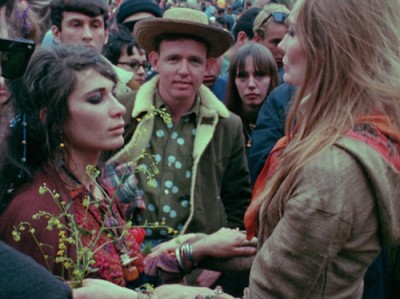
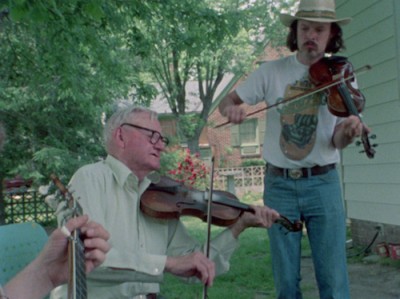
The minor bruise to my ego is entirely mitigated by the fact that Criterion has not just added Les Blank's work to their canon, but they have created an awesome monument to one of the world's most fascinating documentary filmmakers. Always For Pleasure contains fourteen of Blank's best known films from 1968 to 1995, which range in length from twenty minutes to just under an hour, as well as five additional shorts that Blank and his collaborators either fashioned out of outtakes or, in one instance, created while revisiting a film's subject a decade later. The new Blu-ray presentations look and sound startlingly better than these 16mm-shot films have ever looked on home video, while the bonus material is generous, informative, and completely filler-free.
In one of this collection's supplemental interviews, Blank's son Harrod mentions that his father loved to shoot images of flowers and women (Blank died back in April of last year), and shots of women's faces and flowers certainly make their way in to most of the films in the collection, no matter the ostensible subject matter. Yet, as the films in this set unspool, Blank's more immediate fascinations come into clearer focus: food (both cooking and eating), musical performances, and dancing.
And these topics have a tendency to intermingle in Blank's work. In his film A Well-Spent Life, which is mostly about music -- specifically the music of folk-blues guitarist and former sharecropper Mance Lipscomb -- Blank indulges in a sequence where he watches Lipscomb's wife prepare fried chicken and cornbread. Meanwhile, food-focused films like Garlic Is As Good As Ten Mothers and Yum, Yum, Yum! A Taste of Cajun and Creole Cooking are driven by live musical performances more than narration.

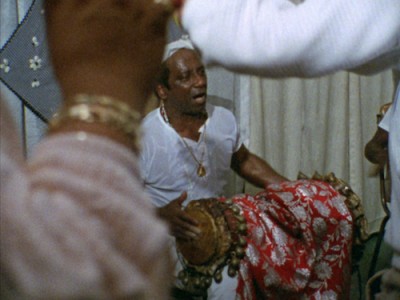
The film which gives this set its name, 1978's Always For Pleasure, allows for the perfect synthesis of music and food fandom by exploring the culture of New Orleans. Several decades before Treme explored the city, Blank's film touches on many of the aspects that makes New Orleans unique. We get to travel in many parades, from a second line at a funeral to an Irish Pride parade to the inevitable arrival of Mardi Gras. We get to see different factions of Mardi Gras "Indians" preparing their elaborate, sparkling costumes for the big day and facing off in the streets in a rhythmic battle of words. There's mouth-watering scenes of crawfish being prepared and music everywhere. New Orleans staples Allen Toussaint, Professor Longhair, and The Neville Brothers are among the musicians who appear in the film.
Watching these films all together -- which is a rewarding and pleasantly exhausting experience -- it becomes clear that the real major theme of Blank's work is community. Sure, he loves food and music, but it's the meaning that communities manage to invest in -- or harvest from -- these things that draws the attention of Blank's camera. The Blues Accordin' To Lightnin' Hopkins, the half-hour masterpiece that kicks off this collection, is as much about capturing the atmosphere, the landscape, and the essential attitude of the people who live in the area of Texas in which blues guitarist Lightnin' Hopkins lives as it is about getting an unguarded glimpse of this jawdroppingly brilliant artist. The Mance Lipscomb film A Well-Spent Life is like a three-years-later sequel that delves even deeper into the community and climaxes with a congregation of churchgoers gathering for a river baptism. The moment isn't explicitly about Mance Lipscomb or Lightnin' Hopkins or blues music, and yet it's about all of that.
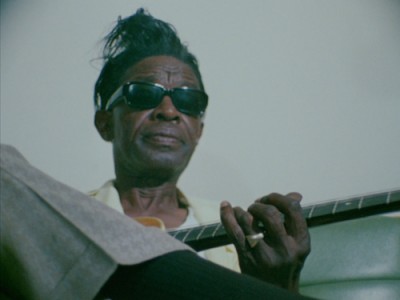
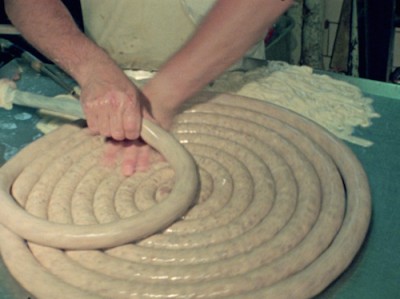
The film God Respects Us When We Work, But Loves Us When We Dance is a music-driven, wordless portrait of the 1967 Los Angeles Love-In that revels in the variety and oddity of the people who chose to gather in Griffith Park one day in the name of peace and love. There's an odd kinship between these people and the folks that Blank profiles a decade and a half later in his film about polka, In Heaven There Is No Beer?. The mostly Polish-American men and women who gather to drink and dance the polka in this later film are looking for connection and happiness, just like those L.A. hippies of yore. There's even a kinship between all these folks and the garlic lovers of Garlic Is As Good As Ten Mothers, who are trying to maintain a "flavorful" cultural identity in the face of bland mainstream culture. This attitude can even be detected in the oddly specific film Gap-Toothed Women, which deals with perceptions of beauty and how a physical trait can unintentionally define someone. In a brilliant touch, this last film starts off very broadly discussing the topic of women with gap teeth and digs more deeply into different women's lives and personalities, exposing their unique identities within this "subculture."
Of the many characters that Blank meets and the many subcultures he explores, the people of Louisiana are clearly some of Blank's favorite subjects. Three of his films from 1971 to 1973, Spend It All, Dry Wood, and Hot Pepper, make an informal trilogy on the topic of rural life in Southwest Louisiana. As expected, there's working and playing, communal food preparation and consumption, and plenty of music-making. Spend It All focuses on a white Cajun community, while the other two films focus on Black French Creoles; unsurprisingly, there's little material difference in their ways of life.
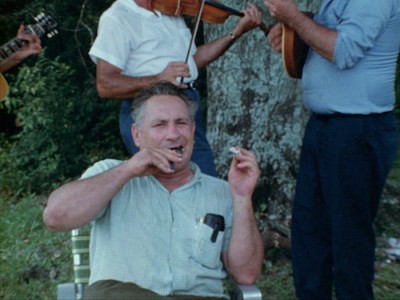
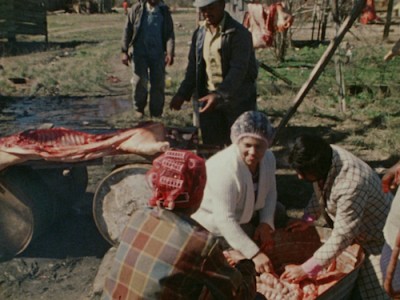
The theme of community continues through Blank's portraits of whiskey-loving North Carolina fiddler Tommy Jarrell (Sprout Wings and Fly), California artist Gerald Gaxiola (The Maestro: King of the Cowboy Artists), and Afro-Cuban percussionist Francisco Aguabella (Sworn to the Drum). Even though the personalities of these individuals are larger-than-life, they flourish because of their context. Jarrell keeps the spirit of the past alive so it can be passed on to younger generations of folk musicians. Gaxiola refuses to sell the artwork he creates, which necessitates him throwing giant yearly events where people come from miles around to see his new work and enjoy his cowboy-themed stage show. (Gaxiola, like so many artists, is tortured by the niche he creates for himself and abandons these events during the film because they make people think of him as a showman and not an artist.) Aguabella, in addition to being one of the top sidemen in Latin music, is also essentially a shaman who uses his drums in Santería ceremonies where he connects groups of people with their gods.
Of course, it preposterous to presume that Blank was intentionally placing this thematic framework onto all of these films. He is clearly an intuitive director who makes films about what he likes and what interests him. In a way, he is like self-reflexive filmmaker Ross McElwee (Sherman's March), because each film seems like a periodic glimpse into what's on the director's mind. For that reason, though the main topics may change, the films in Les Blank: Always For Pleasure almost cohere into one long magnum opus. Images echo in astonishing ways across different films. It's difficult to see someone cutting up garlic in later films without thinking about the strong-breathed subculture of Garlic Is As Good As Ten Mothers. It becomes oddly noteworthy to realize that Gerald "The Maestro" Gaxiola has a gap in his teeth. Marc Savoy appears briefly in 1971's Spend It All, building an accordion, and he returns nineteen years later in Yum, Yum, Yum!, extolling the gastronomic virtues of fresh beef tongue. Also in Yum, Yum, Yum!, we see Margaret Chenier preparing a dish; her late husband Clifton appeared, alive and well, in Hot Pepper, playing souped-up Zydeco-blues music.
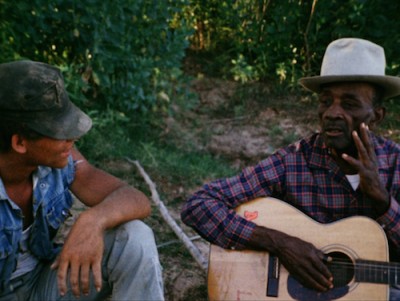
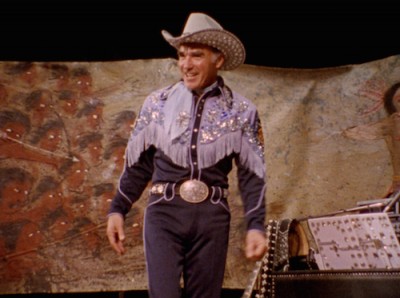
Each film is like different threads in the same tapestry. This owes partially to the fact that each film is like a tapestry in itself. Though some of his later films feature some flat talking-head shots, Les Blank pretty much never uses a perfunctory image for purely informational purposes. Almost every shot in his films is artful -- flavorful -- without being studied. Even his zooms in on still photographs have a personality that could never be mistaken for Ken Burns. All these moments can be isolated and savored, and sometimes the barrage of these great shots can be too much to process. In the bonus features, Blank's early collaborator Skip Gerson says that the filmmaker probably shot one hundred times more footage than would end up in the film. Blank, Gerson, Maureen Gosling (who started editing for Blank in the '80s), and their assistants seem to have constantly sought out the absolute cream of the crop -- finding the perfect faces, the perfect compositions, the perfect in-camera rhythms and actions to compliment the editing.
I am grateful for Les Blank: Always For Pleasure and am frankly humbled before it. There's no other way to describe the emotions attached to witnessing such a grand artistic achievement in one concentrated dose. Over the eleven-plus hours I spent with Les Blank's films and the supplements, I laughed, cried, danced in my seat, and unwittingly said, "Whoa," too many times to count. Okay, so Criterion Collection has shared my secret with the world... The world is only better for it.
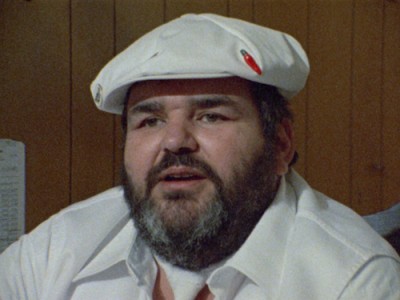
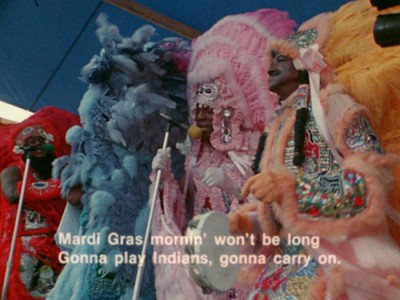
The Blu-ray
Les Blank: Always For Pleasure is spread across three Blu-rays and is packaged with a 57-page booklet that includes information on each film, plus an essay by Andrew Horton.
The Video:
As I mentioned above, it seems likely that these films have never looked better than they do here. The AVC-encoded 1080p 1.33:1 transfers for the fourteen featured films are jaw-droppingly detailed. Even if you've checked out some of these films as part of Criterion's collection on Hulu, those streaming versions do not even communicate the clarity and beauty of these transfers. Obviously, considering these are off-the-cuff documentaries, the look might initially seem a bit dated and grainy, but I would argue that these shortcomings of the 16mm film stock add to the character of the films.
The Audio:
The films come with LPCM mono audio tracks, except for Sworn to the Drum which is in LPCM stereo. As with the video restoration, the audio restoration is amazing. Watching some of Les Blank's films on VHS, I never thought of them as particularly good-looking or good-sounding, but the full-bodied, pristine audio offered here is as much a revelation as the content of the films. Granted, as with the film images, some moments are muffled or oddly captured just because of the nature of documentary sound recording, but these moments are few and far between.
Special Features:
There are actually somewhere in the vicinity of thirty bonus clips that can be viewed on the Always For Pleasure discs, with almost every film in the set getting at least one supplement. I viewed every one; I recommend you do the same, but for the sake of brevity, I am going to lump certain types of clips together in my list below.
- Talking-Head Featurettes (HD, 2:13:34 total) - Blank's friends, family, and collaborators discuss the history and production of almost every film in the set. I tend to get bored with esoteric or fluffy interviews about film productions, but these pieces are all killer and no filler, with plenty of interesting anecdotes that truly enrich the viewing experience.
- Related Short Films (HD upconverted from SD, 1:34:09 total) - Four shorts that Blank constructed from outtakes -- one from leftovers from Lightnin' Hopkins, one from Always For Pleasure footage, and two from unused Sprout Wings And Fly clips -- plus a ten-years-later portrait of Gerald "The Maestro" Gaxiola. These are all solid films, and I suspect it is probably just the lack of high quality masters that caused these to be designated merely as bonuses.
- Appreciations (HD, 20:05 total) - Werner Herzog and Taylor Hackford both offer their appreciations of one of Blank's films. Hackford recounts many of his favorite moments from The Blues Accordin' To Lightnin' Hopkins and marvels at the elegance and simplicity of Blank's approach to filming his subjects. Herzog meanwhile talks about his love for Spend It All, and even admits to knicking a moment in which a Cajun man pulls out his own rotten tooth with a pair of pliers, which he recreated in his own film Stroszek.
- The Maestro Interview (HD, 12:31) - This is a present-day interview with Gerald Gaxiola, who seems somewhat uneasy about the way he was portrayed in Les Blank's film, but seems at peace with it overall.
- Lightnin' Hopkins Musical Outtakes (HD, 11:27 total) - Two clips of Lightnin' Hopkins performing songs cut from the film. The first is his well-known tune "Mister Charlie," while the second is a newly penned song in honor of his director's lackluster poker skills called "Lightning Les."
- Excerpt from Les Blank: A Quiet Revelation (HD upconverted from SD, 10:17) - An interesting taste of a biographical documentary that Blank's son Harrod and one of Blank's collaborators, Gina Leibrecht, are putting together. This sizzle reel gives a general overview of Blank's career and also offers some glimpses of Blank shooting video footage during the past few years.
Final Thoughts:
Even though I had seen many of Les Blank's films before, the Always For Pleasure collection was an eye-opener. The specificity and clarity of Blank's view of the world is shockingly powerful. I used to think of him as this quirky guy whose quirky films I've always liked. I'm forced to modify that stance because it is now apparent that Les Blank is one of the greatest film artists who ever lived. The Criterion Collection has done an outstanding job restoring his films and complimenting them with several hours of excellent bonus features. This is easily one of the top releases of 2014. DVD Talk Collector Series.
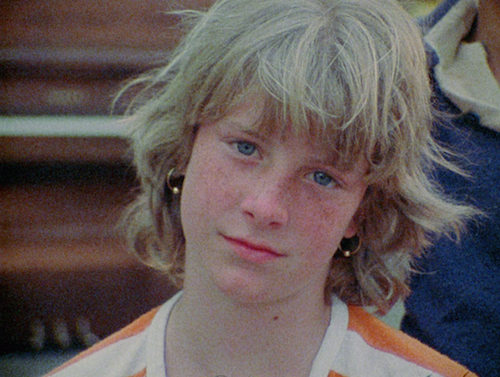
Justin Remer is a frequent wearer of beards. His new album of experimental ambient music, Joyce, is available on Bandcamp, Spotify, Apple, and wherever else fine music is enjoyed. He directed a folk-rock documentary called Making Lovers & Dollars, which is now streaming. He also can found be found online reading short stories and rambling about pop music.
|
| Popular Reviews |
| Sponsored Links |
|
|
| Sponsored Links |
|
|
| Release List | Reviews | Shop | Newsletter | Forum | DVD Giveaways | Blu-Ray | Advertise |
|
Copyright 2024 DVDTalk.com All Rights Reserved. Legal Info, Privacy Policy, Terms of Use,
Manage Preferences,
Your Privacy Choices | |||||||











